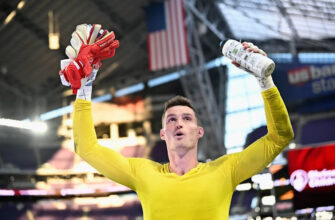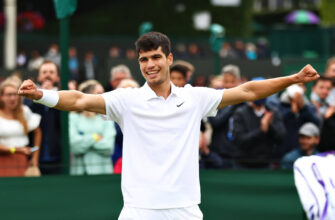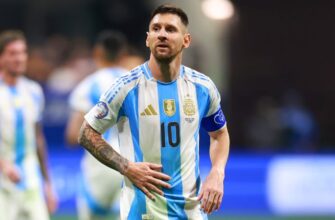For months, the US Men`s National Team under Mauricio Pochettino had been a mosaic of permutations, a grand experiment in search of an identity. Critics murmured, fans fretted, and the `period of experimentation` began to sound less like a strategic phase and more like a permanent state of flux. Then came Tuesday`s 2-0 victory over Japan, and suddenly, the pieces began to click, offering a rare, tangible glimpse into the tactical philosophy Pochettino has been meticulously, if sometimes frustratingly, assembling.
The match against Japan wasn`t just another friendly; it was a revelation. It showcased a team that, for the first time in perhaps Pochettino`s entire tenure, looked like it belonged together, playing with a coherent strategy that married defensive stability with offensive freedom. The `organized chaos` Pochettino often champions finally moved from theoretical concept to practical execution on the pitch.
The Tactical Blueprint: A Back Three for Forward Momentum
At the heart of this newfound cohesion was the 3-4-3 formation, a tactical gambit first deployed against South Korea, where it offered a solitary silver lining in an otherwise dismal performance. Against Japan, however, it flourished. This defensive bedrock, featuring the ever-reliable Chris Richards, the surprisingly adept veteran Tim Ream, and a much-improved Tristan Blackmon, didn`t just protect the goal; it served as a launchpad. It liberated the wingbacks and, crucially, allowed the more attack-minded players to focus on what they do best – creating and scoring goals.
This structural shift is a prime example of Pochettino`s technical approach. By shoring up the rear with three dedicated defenders, he minimized defensive responsibilities for others, allowing for aggressive off-the-ball movement and a fluid attacking shape. It’s a calculated risk, but one that, on this occasion, paid dividends, transforming a previously disjointed outfit into something resembling a well-oiled machine.
Individual Brilliance in a Collective Framework
While the system provided the foundation, individual performances truly illuminated the path forward. After a year plagued by injuries, striker Folarin Balogun re-announced his candidacy for the elusive No. 9 role with a clinical finish in the 64th minute. His seamless link-up play with Christian Pulisic during his first start under Pochettino wasn`t just encouraging; it was a profound sigh of relief for a team that has long grappled with its center-forward conundrum.
Balogun’s performance wasn`t merely a personal triumph; it potentially removes a significant layer of uncertainty from the USMNT’s World Cup lineup. While competition from talents like Ricardo Pepi (upon his return from injury) and Josh Sargent remains, Balogun`s decisive showing positions him as the default front-runner. The days of endlessly debating the striker position may, finally, be drawing to a close.
Perhaps the evening’s biggest revelation, however, was Alex Zendejas. The winger, fresh off a stellar campaign with Club America, translated his club form directly to the national stage, opening the scoring in the 30th minute. Zendejas appears to be a natural fit for Pochettino’s system, mirroring his successful role at the club level. His emergence, alongside other wingback hopefuls like Max Arfsten and Alex Freeman, significantly expands the pool of viable World Cup contenders, adding depth and dynamism that were noticeably absent a year ago.
Refining the Masterpiece: Room for Growth
Despite the undeniable positives, it would be disingenuous to ignore the context. Japan fielded a fully rotated squad, making 11 changes from their previous match. This certainly tempers the magnitude of the victory, reminding us that even the most promising starts often come with an asterisk.
The USMNT`s impressive shot count (19 to Japan`s 11) and expected goals (2.01 to 1.08) highlight their attacking intent, but also revealed a continued need for more clinical finishing. Both Balogun and Pulisic, despite their vital contributions, had early opportunities they might wish they could revisit. This isn`t a fatal flaw, merely an area for refinement for two immensely talented players.
In goal, Matt Freese, making his ninth start in the last ten matches, showcased his shot-stopping prowess but also displayed some nervy moments, particularly on crosses and set pieces. While he`s a strong contender, the lingering questions about his consistency in certain aspects of goalkeeping suggest the competition for the No. 1 spot, likely against Matt Turner, remains wide open. These imperfections are not detractors from the overall positive trajectory but rather signposts for the work that remains.
“This is merely a starting point for the USMNT, some imperfections still easy to spot against Japan. There is no particular shame in being a work in progress with nine months still on the clock, though. The only true expectation for a team at this stage of their World Cup preparation is a signal that they are on the right track…”
A New Measuring Stick for the Road Ahead
After months of searching, Pochettino`s USMNT has finally offered more than just glimmers of hope; they`ve delivered a tangible outline of their potential. The victory over Japan, while imperfect, provided a crucial signal: they are on the right track. It`s a new measuring stick, replacing the frustrating ambiguity of previous performances with a clearer vision of what this team can be.
With nine months until the World Cup, the foundation has been laid. The challenge now is to build upon this nascent cohesion, to hone the tactical approach, and to allow the burgeoning individual talents to truly flourish within Pochettino`s “organized chaos.” The road to the World Cup is never smooth, but for the first time in a long time, the USMNT appears to have found its compass.









